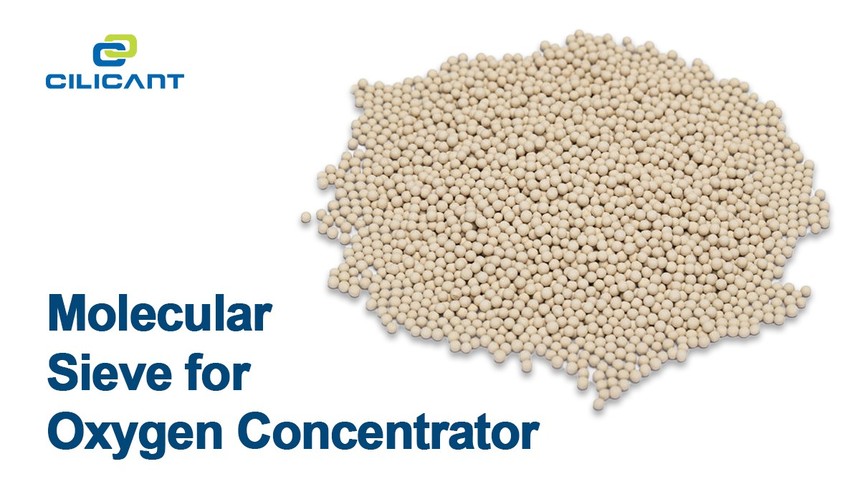|
Molecular SieveGenerating Oxygen With Lithium-Based Molecular SieveThe invention of portable oxygen concentrators (or oxygen generators as they are often called) commoditised the availability of high purity medical grade oxygen. These portable devices use a pressure swing principle (PSA) to pass ambient air through a molecular sieve adsorbent, concentrating oxygen in the process. Portable oxygen concentrators allow for easy home-based patient care, indoor air-quality enhancement, and other non-industrial uses. Since most commercially available oxygen concentrators are designed around a standard operating principle, the choice of adsorbent is critical for maximising oxygen generation. In this brief article, we will help you decide on the best molecular sieve for use in portable oxygen concentrators. Why is molecular sieve the best desiccant for generation of oxygen?Molecular sieve, a synthetic zeolite, has excellent adsorptive properties that have been exploited in several desiccant technologies that are widely used in the pharmaceutical and food industries. Additionally, molecular sieve binds nitrogen, separating it from oxygen in the air and it is this property that has made it the ideal adsorbent for portable oxygen concentrators. Most portable oxygen concentrators use either the pressure swing adsorption (PSA) or vacuum pressure swing adsorption (VPSA) mechanisms to separate high-purity medical grade oxygen from ambient air. This is achieved by passing a flow of air over a molecular sieve cartridge that is housed within the concentrator. As the pressure of air in the concentrator swings, nitrogen is adsorbed by molecular sieve, allowing high-purity oxygen to pass into the flowthrough. The purified oxygen (93% ±3%) is then pumped through an outlet for use in patient care or in other scenarios as required. The high affinity and reversible binding of nitrogen to molecular sieve also enables the creation of long-lasting, self-cleaning portable oxygen generators. While the oxygen concentrator is in operation, it uses one molecular sieve cartridge to concentrate oxygen. Some of the purified oxygen is then fed into a secondary molecular sieve cartridge to clean out any bound nitrogen molecules. This done in anticipation of a decreased binding efficiency in the primary cartridge over time. Once the first molecular sieve cartridge is saturated, the oxygen generator then feeds air through the secondary cartridge to concentrate oxygen while also back feeding the first cartridge to remove bound nitrogen from the molecular sieve matrix.
Why lithium-based molecular sieve is preferred over a standard 13X and 5A molecular sieve?While sodium-based zeolites are readily available for a variety of pharmaceutical applications, studies have shown that ion-exchanged lithium-based molecular sieve has far superior oxygen recovery performance over sodium-based 13X and 5A molecular sieve. From a technical standpoint, when the Na+ cation in sodium-based molecular sieve is replaced with the Li+ cation, the zeolite has a much stronger interaction with the quadrupole moment of each nitrogen molecule passing through the cartridge. This translates to high efficiency, high purity (93% ±3%) oxygen recovery at ambient temperature for portable concentrators using lithium-based molecular sieve cartridges. Lithium-based molecular sieve has approximately double the nitrogen/oxygen selectivity of sodium-based molecular sieve and almost three times more capacity for the adsorption of static nitrogen. With a higher product gas capacity than sodium-based molecular sieve, lithium-based molecular sieve stands as the better choice for faster production of high-purity concentrated oxygen for urgent patient care. Additionally, with the use of lithium-based molecular sieve, oxygen concentrators can be manufactured with an exceedingly small footprint, making them ideal for the often space-restricted home-based care environment. “The information provided by Cilicant Private Limited in this paper is for general informational purposes only and shall not be relied upon by anyone for any other purpose. We make no representation or warranty of any kind, express or implied, regarding the accuracy, adequacy, validity, reliability or completeness of any information provided in this paper. Cilicant Private Limited owns all the intellectual property rights in the contents of this paper. The contents of this paper shall not be replicated or reproduced in any manner whatsoever without the prior written permission of Cilicant Private Limited. Cilicant Private Limited shall not be liable for any direct, indirect, incidental, consequential or punitive damages or losses resulting from your reliance on the data provided in this paper.” |














